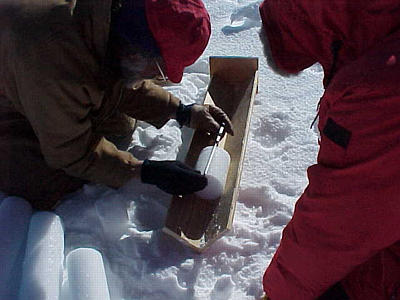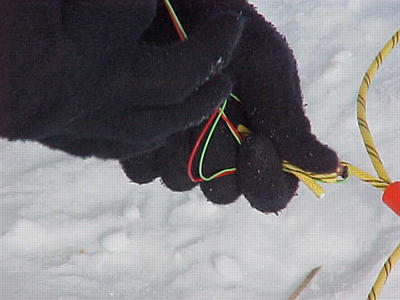8 January, 1999
8 January
PRACTICE FOR THE BIG BANG
The explosives test pit at South Pole station is an area that is at
least 20 feet deep and 50 feet in length. At the bottom of the
pit, tunnels are being blasted into its walls. They are practicing
tunnel construction for the new South Pole station to be completed by
2005. John Wright (a.k.a. "Blaster"), patiently guided Ryan and I
through the routine of a blast that could be felt 160 feet under-
ground. We each were given the opportunity to set off a trial charge
as we closed in on the proper combination of pentolite, blasting cap
and detonator cord necessary to achieve the effect that we sought.
There were hydrophones (microphones) buried with the last string
of the telescope last season. We wanted to see if they were
working properly from their icy perch on the cable more than a mile
under the surface. By setting off a charge about 50 feet from the
area of the last string deployed, we hoped to be able to get a
response from the microphones. The real test would be on
Monday morning. We measured ice core remnants from the pit
where the actual test would be conducted to get an idea of ice
density.

Checking the densiy of a fraction of the ice core removed from the pit that the explosion will occur in backs up our data on the calculated density. We'd like to know how fast the sound will travel through this ice.

Careful planning with the blasting cap and detonation cord ensures a safe and accurate result.
Contact the TEA in the field at
.
If you cannot connect through your browser, copy the
TEA's e-mail address in the "To:" line of
your favorite e-mail package.
|
